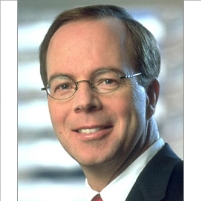Income Gulf between CEOs and Workers 11 Times Greater than in 1965
Sunday, May 06, 2012
 John Hammergren of McKesson, CEO compensation champion
John Hammergren of McKesson, CEO compensation champion
To understand how the wealthy 1% more than doubled its share of the nation’s wealth in the past 30 years and holds onto it, just keep an eye on Wall Street and the corporate CEOs. Today, American CEO pay is about 231 times greater than average worker pay, which is 11 times more unequal that it was in 1965, when the CEO-to-worker compensation ratio was only about 20-to-1.
This trend has worsened in recent decades as CEO compensation exploded while worker pay stagnated: from 1978 to 2011, CEO pay grew more than 725%, and worker pay increased only 5.7%, according to a report released last week by Lawrence Mishel and Natalie Sabadish of the Economic Policy Institute (EPI).
The Report, “CEO pay and the top 1%,” points out that from 1979 to 2005 executives and workers in finance accounted for 58% of the expansion of income for the top 1%, and for 67% of the increase in income for the top 0.1 percent. “CEOs have fared far better than the typical worker, the stock market and the U.S. economy as a whole since the late-1970s,” Mishel said. “Compensation growth for executives and for top-tier financial-sector workers has fueled the enormous growth of incomes at the top.”
How the 1% did it is explained in a second EPI Report, released just days earlier, on the yawning gap between productivity (the dollar value of goods or services produced in an hour) and median compensation growth. Growth in productivity provides the basis for better living standards, but only if workers are able to get employers to raise their wages, as they did from World War II to about 1973, when wages and productivity rose together. Since 1973, however, that pattern has been broken. Hourly productivity has gone up by 80.4%, meaning that if an average worker in 1973 produced $100 worth of widgets per hour, in 2011 he or she is producing $184 worth; but median hourly compensation increased only 10.7%, so if that 1973 worker was making $10 per hour, he or she is earning only $11.70 per hour now.
Where have the benefits of all that increased productivity gone? Mainly to CEOs and to Wall Street, as union membership declined, labor law became more pro-employer, and the tax code was re-written to give special low rates to investors. As AllGov has reported, the tax code is now such that in 2010 25 major companies paid less in taxes than they did to their CEOs.
According to Forbes, the CEO who currently leads the pack is John Hammergren of health care products and supplies giant McKesson, whose total compensation for 2011 was $131 million.
-Matt Bewig
To Learn More:
CEO Pay and the Top 1%: How Executive Compensation and Financial-Sector Pay have Fueled Income Inequality (by Lawrence Mishel and Natalie Sabadish, Economic Policy Institute)
CEOs Made 231 Times more than Workers Did in 2011 (Economic Policy Institute)
25 Major Companies Paid More to CEOs than They Did in Taxes (by Noel Brinkerhoff and David Wallechinsky, AllGov)
The Economy is Booming again…for CEOs (by Noel Brinkerhoff, AllGov)
- Top Stories
- Unusual News
- Where is the Money Going?
- Controversies
- U.S. and the World
- Appointments and Resignations
- Latest News
- Musk and Trump Fire Members of Congress
- Trump Calls for Violent Street Demonstrations Against Himself
- Trump Changes Name of Republican Party
- The 2024 Election By the Numbers
- Bashar al-Assad—The Fall of a Rabid AntiSemite






Comments